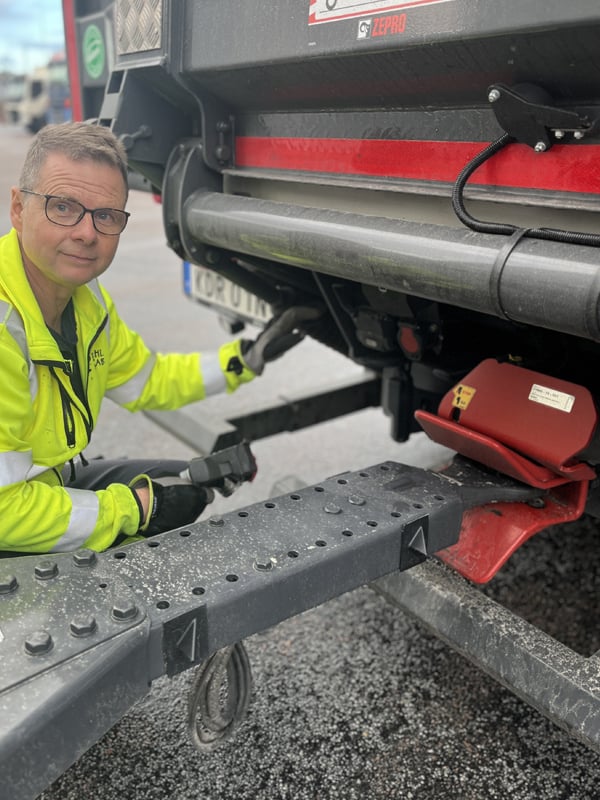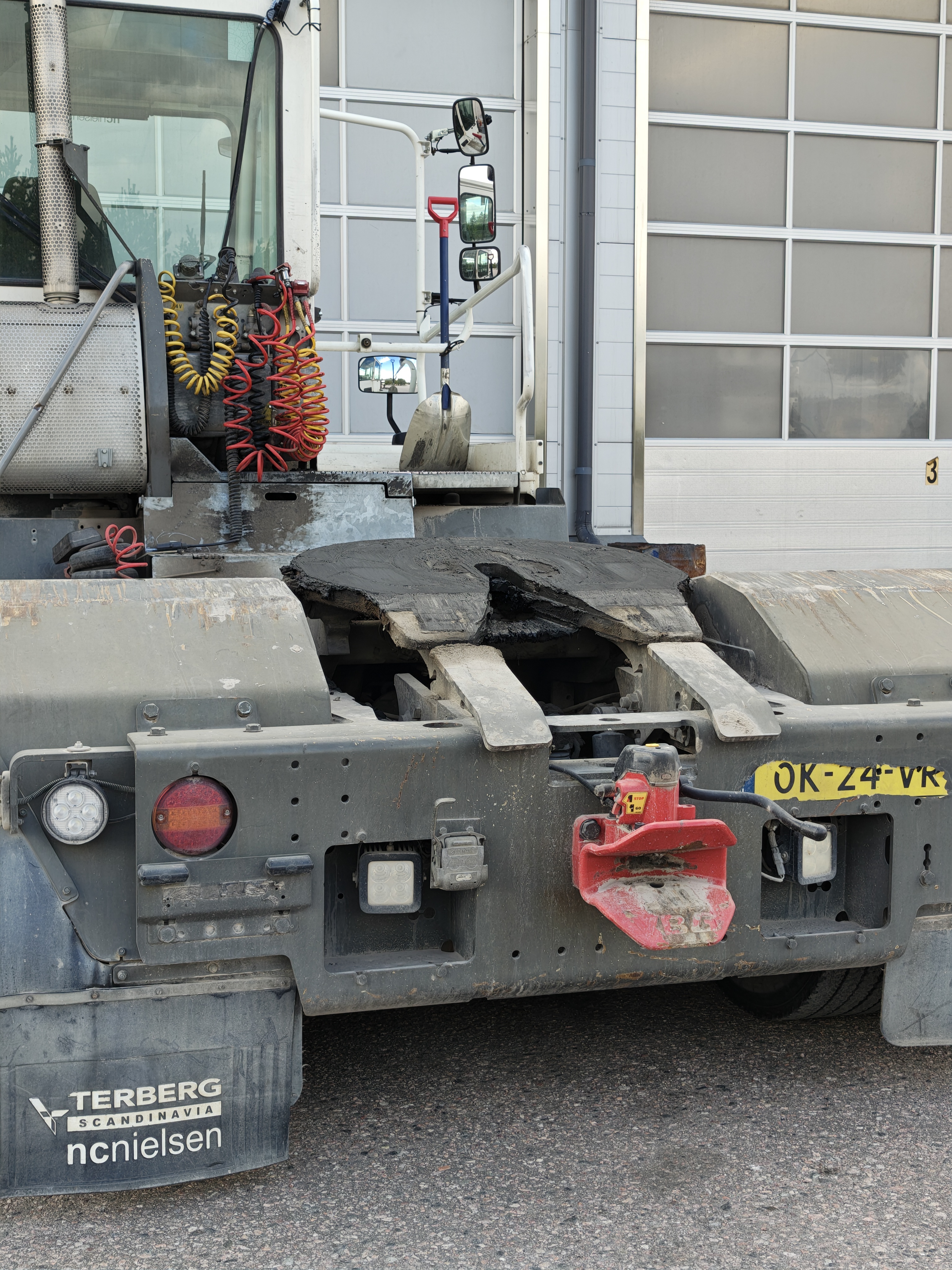HOW CAN A DRIVER-ASSIST SYSTEM LOWER THE TOTAL COST OF OWNERSHIP OF A TRUCK COMBINATION?
A fleet manager needs to identify areas where costs can be optimised. This necessitates being proactive to maximise vehicle utilisation, and to attract and retain skilled drivers. It’s a complex and challenging job in a world where everything must be faster, more sustainable, and cost as little as possible.
Challenges of a fleet manager
At the company Ekdahl Miljö, Johan Andersson works as a fleet manager, and he shared his thoughts about how a haulage company can be managed efficiently and sustainably – both in terms of its finances and the work environment.
Johan, like many other fleet managers today, contemplates how the vehicle fleet will be operated in the future. On the one hand, it is important to decide which fuels will be used, as well as how the company will meet the large and growing need for transport while dealing with driver shortages. In addition, there are longer delivery times for vehicles and bodies, and prices are increasing faster than the haulage company can implement corresponding increases on their services to maintain profitability. A challenging equation, to say the least.
To keep the truck fleet rolling and profitable, it is of the utmost importance to keep the trucks in good condition and to attract and retain skilled drivers. Today, there are several tools for this, such as fleet management systems. However, coupling equipment is not yet integrated with these digital tools, and must be checked by the driver, who is responsible for the roadworthiness of the vehicle combination. The rear of the truck consists of many components, such as lights, underrun protection, drawbar, etc., which can be damaged in during jackknifing. In addition, incorrect coupling can also damage the coupling equipment, power actuator, etc.
Costs of jackknife damage
If the equipment on the truck is damaged, the costs can be high. Not only the repair costs but also other cost effects resulting from jackknife and reversing damage. Downtime can cause the haulage company’s customers to suffer. Not only is this expensive, but it can also harm customer relationships. And if this type of damage recurs, profitability will be adversely affected.
- Repair costs
- Truck downtime
- Delayed customer deliveries
- Job losses
- Logistics planning
- Staff planning
Jackknifing a trailer and truck is a common risk for professional drivers. It can happen to the most experienced driver in a stressful situation. Jackknifing occurs between the truck and trailer when reversing, and the risks are greatest in narrow turning areas, in the forest during timber collection, and at construction sites.
Jackknifing is when a trailer folds against the truck at an acute angle. The position of the trailer and truck then resembles a V or L, and the combination locks at that angle. If you have ever experienced this, you will know that there is a major risk of damage to the truck components, and it can be a costly incident.
Reduce downtime – focus on delivery reliability and driver safety
Ekdahl Miljö decided to retrofit VBG Driver Assist to prevent damage to equipment, such as drawbars, lights, underrun protection, and couplings, and to make coupling the truck and trailer easier for drivers. Johan says it was an easy decision: “The VBG Driver Assist system is simple for the mechanic to both install and calibrate, and results in added safety for the driver in the cab.” According to Johan, the most common damage they encounter is to the coupling equipment, which affects the operation of the truck fleet. He made the decision to invest in the driver-assist system, which will prevent this type of damage from occurring by assisting the driver when reversing with a trailer and coupling. “The system is working well so far; after six months we can already see that the drivers are satisfied and that the number of incidents has decreased. In the next six months, we plan to install the system on more of our combinations.”
Makes the job easier for fleet manager and driver
At Ekdahl Miljö, drivers are very satisfied. Richard Persson, Professional Driver at Ekdahl Miljö, feels that the guiding function makes coupling quick and safe. The system provides audio instructions on how the driver needs to adjust the height of the truck to position correctly against the drawbar eye and drawbar. Richard, who is an experienced and highly skilled driver with over 30 years behind the wheel, feels the system helps him the most when the reversing camera is not sufficient.
“It’s so dark this time of year for large parts of the workday, so the system works well when you can’t even see what’s shown in the reversing camera because it’s so dark. I use it as a safety measure and complement to the camera and mirrors.”
Step by step – couple safely with VBG Driver Assist and avoid damage to your coupling equipment.
- Reverse towards the trailer and stop a short distance away.
- Open the coupling.
- Make sure that the drawbar is at the correct height against the coupling. The VBG Driver Assist guidance function allows you to easily adjust position. It indicates whether you need to adjust the height of your vehicle so that you can couple safely and securely without damaging your coupling equipment.
- Reverse towards the trailer to couple.
- Make sure that the coupling is closed and locked. The signal pin must be in the locked position!
- Connect electricity, air hoses and hydraulics.
- Unload the drawbar so that the drawbar eye is resting on the coupling’s wear plate.
- Before you start driving, perform a general check.
In summary, we know that driver-assist systems reduce the risk of damage to the coupling equipment, which in turn leads to lower repair costs, reduced downtime, and increased safety for the driver. Faster and safer coupling helps to reduce the risk of accidents for people and vehicles. Overall, this helps to lower the total cost of ownership of a truck combination.
Get to know VBG Driver Assist more
Recommended reading

The transition enters its next phase – Future outlook 2026

Field tested reliability - VBG shunting coupling at Raskaspari Trailer Service Oy

